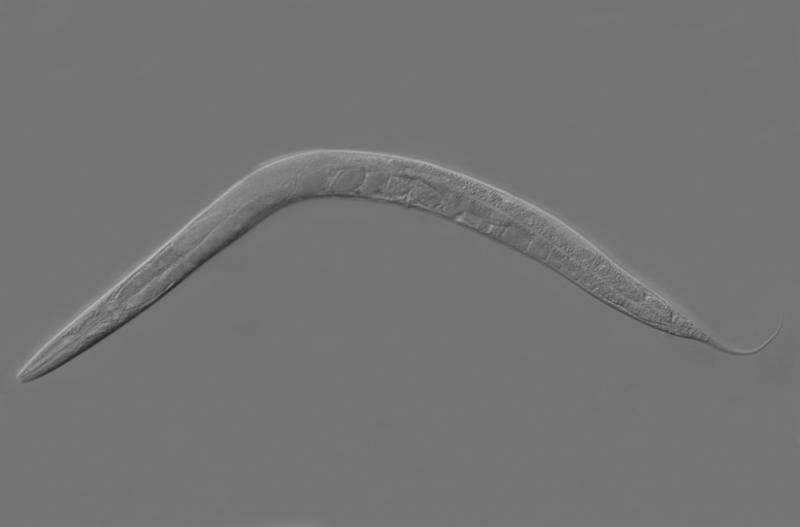Roundworms even more useful than researchers previously thought

The one millimetre long roundworm Caenorhabditis elegans has been used as a model organism in scientific research, and has therefore been extensively examined. A research group at Uppsala University has now demonstrated that the worm is an even more complete model system than previously thought, which could enable more detailed research into areas such as early embryonic development.
Caenorhabditis elegans (often abbreviated C. elegans) is a roundworm (nematode) used as a model system not only to study human diseases but also for understanding fundamental biological processes. The roundworm has for example been used to study the nervous system and the first cell divisions of the fertilised egg cell.
Sulfated glycosaminoglycans, extended carbohydrate chains decorated with negatively charged sulfate groups, have important functions both during early embryonic development and in adults. Chondroitin sulfate is a glycosaminoglycan manufactured in all animals from jellyfish and snails to humans. The reason why no one has found chondroitin sulfate in roundworms has always puzzled scientists. A new way to isolate the sulfated glycosaminoglycans has been crucial to solve this puzzle.
"Now we know that Caenorhabditis elegans do have the ability to produce chondroitin sulfate. The vast amount of the same carbohydrate without any sulfate groups produced by the roundworm has probably masked the much fewer chondroitin sulfate chains. A previously undiscovered enzyme with the ability to tranfer sulfate groups to the carbohydrate chains has also been identified in the study", says Tabea Dierker, researcher in the group of Lena Kjellén at the Department of Medical Biochemistry and Microbiology at Uppsala University.
It has previously been shown that blocking the enzymes that build the carbohydrate chains disrupts the ability of cells in the early embryo to divide. Now it is possible for researchers to investigate if the sulfate groups are important for this early cell division. Many other functions related to chondroitin sulfate can now be studied in Caenorhabditis elegans as a results of this discovery.
"It is satisfying to see that our results make Caenorhabditis elegans a more complete model system than previously thought", says Andrea Hinas, researcher at the Department of Cell and Molecular Biology.
More information: Tabea Dierker et al. Nematodes join the family of chondroitin sulfate-synthesizing organisms: Identification of an active chondroitin sulfotransferase in Caenorhabditis elegans, Scientific Reports (2016). DOI: 10.1038/srep34662
Journal information: Scientific Reports
Provided by Uppsala University
















